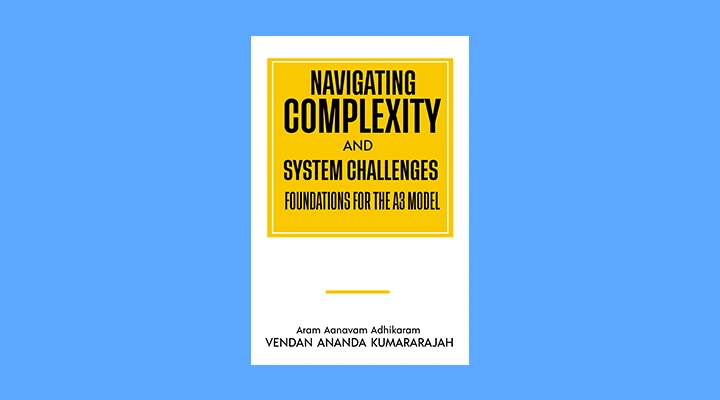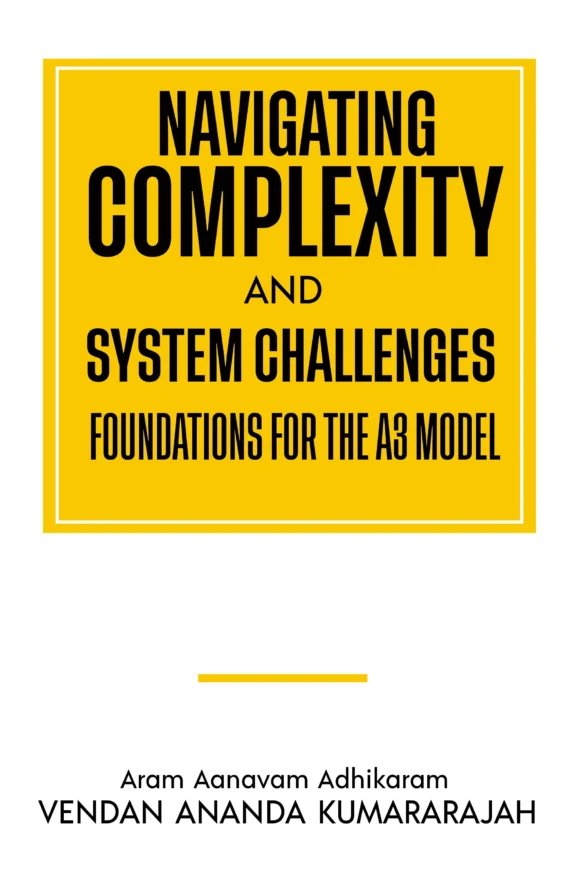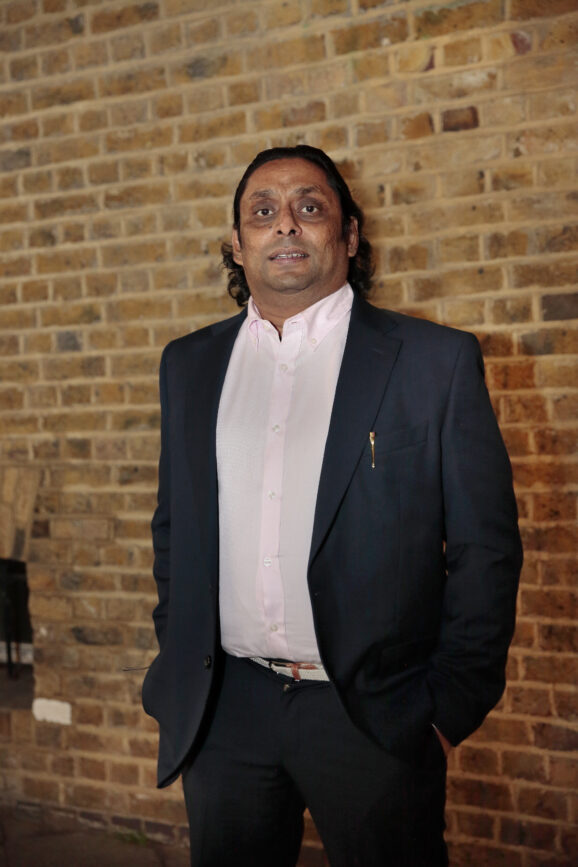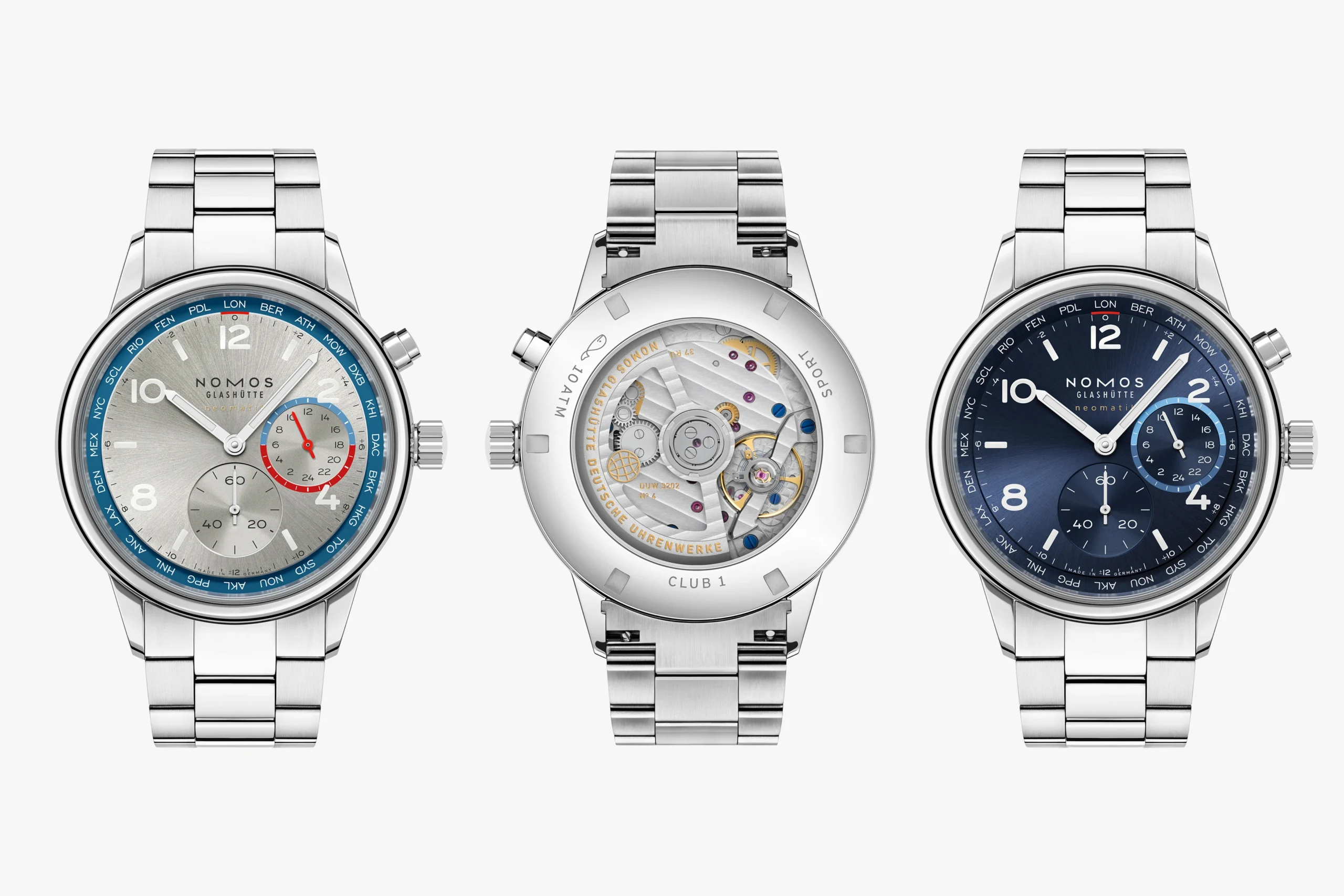The European Reads: What a 2,000-year-old philosophy can teach us about power

John E. Kaye
- Published
- Lifestyle

Vendan Ananda Kumararajah’s Navigating Complexity and System Challenges: Foundations for the A3 Model puts forward a new way of thinking about governance at a time when institutions, organisations and technologies are straining under the weight of disruption. Drawing on both his career in digital transformation and the Tamil philosophical tradition of Saiva Siddhantam, Kumararajah argues that systems can only remain viable if ethics, vigilance and legitimacy are built into their core. In this exclusive interview with The European, he explains how his A3 Model seeks to bridge philosophy and practice, and why he believes its adoption is critical to the future of work, technology and society
The collapse of legacy governance models is a recurring theme in Vendan Ananda Kumararajah’s Navigating Complexity and System Challenges: Foundations for the A3 Model. Kumararajah, an executive consultant, sets his provocative new book against two distinct backgrounds to frame a meaningful study that promises to reshape how organisations govern technology, manage transformation and sustain ethical coherence in the workplace and beyond.
The first is rooted in professional life. “Over the course of a career in digital transformation, I witnessed project after project falter and fail,” he told The European. “The technology itself was often sound, but the governance around it was fragile and the values underpinning it had been allowed to drift.” These failures convinced him that technology on its own could not deliver lasting results without strong governance and a clear ethical foundation.
That conclusion reflects the trajectory of his own career. Based in the UK, Kumararajah is a strategic management professional and digital transformation expert. He holds an MBA from the University of Derby and is a Member of the Chartered Management Institute. As an MIT Transformation Architect (CXO Transform) and a certified practitioner in Business Transformation Management Methodology, he has worked with organisations undergoing digital evolution on areas ranging from maturity assessment to technology innovation. His expertise extends into value creation, applied behavioural science, strategy design and systems thinking, all of which shape his approach to the governance of emerging technologies.
The second source he draws on is philosophical. Tamil Saiva Siddhantam, a school of Tamil thought with roots in southern India, describes reality in terms of a constant interplay between order, distortion and agency. For Kumararajah, this provided a conceptual grammar that could be applied to modern governance challenges. By setting these two strands alongside one another — the lessons of practice and the insights of philosophy — his book argues that today’s governance structures are no longer viable in what he calls the “recursive age”.
He positions the book as a paradigmatic novelty — what he describes as a “new order in cybernetics”, structurally distinct from existing frameworks such as the Viable System Model or Constitutional AI.
His proposed answer, as the title suggests, is the A3 Model, a recursive, or self-renewing, framework built on three interdependent elements — Aram (ethical coherence), Aanavam (distortion awareness), and Adhikaram (legitimate agency). The model is presented as a form of systemic intelligence, one capable of keeping organisations, technologies and institutions viable by continuously testing their purpose, diagnosing distortion and renewing legitimacy. Unlike static codes of ethics or compliance regimes, the A3 loop is designed to operate at what Kumararajah describes as “machine tempo”: fast enough to track the dynamics of autonomous systems while remaining grounded in ethical coherence.
To translate this philosophy into practice, Kumararajah sets out implementation pathways. Alongside the theoretical architecture, the book introduces diagnostic tools — including the Aram Ethical Viability Test (AEVT), the Aanavam Distortion Resolution Tracker (ADRT) and the Agency Fitness Index (AFI) — designed to operationalise recursive governance and make ethical alignment testable across institutions and technologies.

These are presented as ways of identifying ethical drift, mapping distortion and ensuring that the authority to act is only ever granted on the basis of evidence. By combining practical mechanisms with a philosophical framework, Kumararajah attempts to bridge the gap between systems theory and the everyday realities of policymaking, organisational leadership and technology governance.
Navigating Complexity and System Challenges places the A3 Model in a broader civilisational context, arguing that the questions it raises go beyond organisations or technologies to touch on how societies themselves remain coherent and legitimate. As such, it is neither a purely technical manual nor a straightforward work of philosophy but a contribution that straddles systems thinking, technology governance and moral philosophy.
At times the prose is dense, moving quickly between metaphysical reflection and the mechanics of diagnostic indexes. At others, it takes the tone of a call to action, insisting that recursive ethical governance is essential to keeping systems viable rather than an optional extra.
Taken together, the book presents a diagnosis and a prescription: governance structures are failing because they cannot cope with the speed and complexity of the systems they are meant to regulate, and the A3 Model is offered as a way of restoring coherence and legitimacy in real time.
The result is a study of clear importance, even if its ambition and style are likely to divide opinion. “This book is a foundation, not a finished system,” he writes in the opening chapters. “Treat it less as a manual, and more as a recursive companion: a text you return to as contexts shift and new systemic challenges arise.”
In this exclusive Q&A, we sat down with Kumararajah to find out more about his study and to explore how the A3 Model aims to change the way organisations, technologies and societies are governed.

The European: What is the central idea behind Navigating Complexity and System Challenges?
Kumararajah: At its heart, the book argues that legacy governance models, whether institutional, technological, or philosophical, can no longer cope with the converging crises of our age. Ecological collapse, digital disruption, and institutional breakdown are converging, yet our frameworks for decision-making remain fragmented, outdated, or overly technocratic. Navigating Complexity and System Challenges responds by introducing the A3 Model — a recursive grammar for governance built around three interdependent elements: Aram, ethical coherence; Aanavam, distortion awareness; and Adhikaram, legitimate agency.
The A3 Model is, to my knowledge, the first recursive governance model grounded explicitly in ethical coherence. It reframes governance not as control, but as continuous ethical alignment across human and technological systems. In doing so, it provides a new grammar and architecture of ethical intelligence — one that is practical as well as philosophical. With it, systems can continuously diagnose, adapt to, and restore coherence amid disruption.
How did your professional background in digital transformation shape the A3 Model?
I wrote this book because I saw, in my professional life, how organisations so often fail because of distorted governance and eroded values. In leading digital transformation programmes, I witnessed the same pattern repeatedly: firms pour money into new software and automation, yet ignore the governance structures needed to sustain them. Projects collapse not because the technology was faulty, but because feedback loops were ignored, distortions accumulated, and leadership neglected the ethical architecture that would keep systems viable.
I recognised that technical fixes could never be enough. We needed a structural grammar of ethical intelligence, one capable of diagnosing, predicting, and correcting distortions in real time. The A3 Model emerged from bridging practice with philosophy. It combines the lessons of transformation work with the recursive insights of Saiva Siddhantam, creating a living loop where ethics, vigilance, and legitimate agency sustain coherence. This was my motivation: to provide a paradigmatic alternative to static compliance checklists or Western technocratic fixes, and to restore trust and coherence at all levels of organisation.
Could you break down the triad of Aram, Aanavam and Adhikaram with real-world examples?
The A3 Model is a triadic, recursive framework. Aram sets the ethical baseline — the compass or constitution that guides system behaviour. In healthcare AI, for instance, Aram means ensuring algorithms serve patient wellbeing, not only efficiency or profit. Aanavam is the vigilance to detect when systems drift from their ethical baseline. When biases in training data cause racial disparities in medical outcomes, that is distortion, and Aanavam is the force that brings it to light through anomaly detection, whistleblowing, or continuous auditing. Adhikaram is the authority to act, but only if legitimacy is proven. A hospital board accountable for correcting bias, or an algorithm permitted to run only if its traceable impacts align with system values, are examples of Adhikaram in practice.
What makes the A3 Model unique is that these three are not static categories but rather form a living loop. Ethics guides action, distortions are identified and corrected, and only legitimate agency is authorised. The cycle repeats continuously. It is this recursion — not one-off decisions or static rules — that allows systems to remain coherent under stress.
How does the A3 Model help leaders and policymakers navigate AI, hyperautomation, and systemic crises?
One of the distinguishing features of A3 is that it translates philosophy into operational tools. It introduces diagnostics such as the Aram Ethical Viability Test (AEVT), the Aanavam Distortion Resolution Tracker (ADRT) and the Agency Fitness Index (AFI). These tools enable leaders to identify ethical drift early, test the legitimacy of agency in real time, and ensure systems adapt without losing coherence.
For policymakers, A3 provides a method to stress-test regulations and pre-empt crises before they erupt. For executives, it creates dashboards that track coherence and legitimacy alongside financial or operational metrics. For AI developers, it ensures autonomous systems are recursively answerable — capable of evidencing their legitimacy long before harm manifests.
In short, A3 offers what no other framework does: a computable, testable way to make ethics, distortion-awareness, and agency structural features of governance itself. This is why I describe it as a ground-breaking framework for governing complexity.
In what ways does Tamil Saiva Siddhantam serve as the foundation for A3?
The roots of A3 lie in Saiva Siddhantam, an ancient Tamil philosophy that provides a profound metaphysical grammar for coherence, distortion, and agency. Texts such as the Tirukkural and Tirumantiram describe the continuous cycle of virtue, vigilance, and legitimate power. I drew on this tradition because it emphasises that ethics is not abstract but lived and recursive.
By modularising these insights, I was able to transpose them into a systems governance model. Saiva Siddhantam describes reality as a recursive dance of coherence, distortion, and capability. A3 adapts this into a cybernetic grammar, showing that ancient metaphysics can generate operational tools for AI governance and policy today. This is not cultural homage, but a rigorous systems contribution — proof that non-Western traditions can offer viable blueprints for the challenges of the 21st century.

Why do you describe this as a “recursive age”?
The world we inhabit is characterised by non-linear dynamics. AI models retrain themselves, financial markets self-amplify, ecological systems accelerate feedback loops. Traditional governance, by contrast, is linear and reactive. It cannot keep pace.
We now live in what I call a recursive age — one in which systems must adapt, learn, and self-govern in real time. Recursive governance mirrors this reality. Instead of rigid rules imposed from outside, it creates a living loop of ethical coherence, vigilance, and legitimate action. Ethical coherence is not a luxury but a structural necessity. If we want resilient, humane systems, we must design for recursion, not control. The A3 Model gives language and structure to this reality, and it explains why recursive governance is the only viable response to AI, hyperautomation, and systemic crises.
What risks do you see if governments and organisations fail to adopt recursive ethical governance?
The risks are existential. Without recursive checks, distortions compound faster than human correction. Institutions lose legitimacy, systems become brittle, and crises spiral out of control. We already see algorithms amplifying bias, agencies unable to adapt, and corporations losing their social licence to operate. Failure to embed recursive ethical governance will accelerate the crises of trust and collapse that define our age.
A3 is designed precisely to prevent this. By embedding ethics, distortion-awareness, and legitimate agency into the very grammar of governance, it enables systems to regenerate coherence continuously. Without this, distortion compounds, coherence erodes, and agency becomes illegitimate. With it, systems remain viable.
How does A3 differ from existing frameworks in systems theory and AI governance?
Existing models such as the Viable System Model, Cynefin, or Critical Systems Thinking are valuable, but they treat ethics as an add-on. A3 treats ethics as a structural property. Agency is not assumed; it is continuously earned and evidenced. Distortion is not managed reactively but vigilantly mapped.
What sets A3 apart is its combination of philosophical depth and operational rigour. It bridges ontology with diagnostic tools. Where others stop at analysis, A3 provides a practical grammar for leaders, technologists, and policymakers to act. This is why I describe it as not just a model, but a new order in cybernetics, ethics, and systemic intelligence.
Who do you see as the primary audience for this book, and how should they apply its lessons?
The audience is intentionally broad. Policymakers and regulators can use A3 to design adaptive, evidence-based frameworks for AI and governance. Executives and transformation leaders can apply it directly in organisational dashboards, ensuring their strategies remain coherent under disruption. Academics can extend the model into cybernetics, complexity science, and AI ethics. Reflective learners and thought leaders can use it as a guide for living responsibly in an age of uncertainty.
Civil society leaders and innovators, too, will find practical value in the model. Wherever legitimacy, coherence, and resilience must be actively generated and protected — whether in government, business, research, or community life — A3 provides both philosophical foundation and practical roadmap. My hope is that readers come away empowered with a new grammar for recognising when systems are drifting, diagnosing distortions, and restoring coherence.
Looking ahead, how will A3 Manifesto, the next in the Navigating Complexity and System Challenges series, build on this volume?
If this book sets the architecture, the A3 Manifesto is the invitation. It will map pathways for cross-sector adoption, provide diagnostic benchmarks, and cultivate a global community of practice around recursive ethical intelligence.
Its ambition is to establish A3 as public infrastructure — a shared grammar for navigating complexity across institutions, AI architectures, and corporate governance. It will not be a solitary vision but a collaborative process, inviting dialogue, critique, and co-creation. If Navigating Complexity and System Challenges introduces the framework, the Manifesto will show how to implement it in the world of the polycrisis.
Final thought: what message would you like to leave readers with?
Good governance means continuous ethical alignment rather than rigid control. In this recursive age, as I call it, coherence must be regenerated, distortion must be mapped, and agency must be continuously earned. Ethics cannot be treated as optional, nor agency as permanent.
The A3 Model is therefore a civilisational blueprint for governing AI, complexity, and our planetary future. It is a call to embrace recursive ethical governance as the only viable path through the turbulence of our century.
Navigating Complexity and System Challenges: Foundations for the A3 Model by Vendan Ananda Kumararajah is out now in hardcover priced £32.50, paperback (£19.99) and eBook (£7.99) from Amazon and other major retailers.
READ MORE: ‘Two new guides for adults living with late autism and ADHD diagnosis‘. As diagnoses of autism and ADHD in midlife and beyond rise sharply, two new books from Jessica Kingsley Publishers offer practical roadmaps for people grappling with the question: what happens next?
Do you have news to share or expertise to contribute? The European welcomes insights from business leaders and sector specialists. Get in touch with our editorial team to find out more.
Sign up to The European Newsletter
RECENT ARTICLES
-
 Book Review: A history of the world told by animals — and it changes everything
Book Review: A history of the world told by animals — and it changes everything -
 Make a list, check it twice: expert tips for running Christmas in hospitality
Make a list, check it twice: expert tips for running Christmas in hospitality -
 December night sky guide: what to look for and where to find it
December night sky guide: what to look for and where to find it -
 Four Seasons Yachts reveals overhauled 2027 Mediterranean programme
Four Seasons Yachts reveals overhauled 2027 Mediterranean programme -
 The European road test: MG’s new electric flagships, the Cyberster and IM5
The European road test: MG’s new electric flagships, the Cyberster and IM5 -
 Historic motorsport confronts its energy future
Historic motorsport confronts its energy future -
 Protecting the world’s wild places: Dr Catherine Barnard on how local partnerships drive global conservation
Protecting the world’s wild places: Dr Catherine Barnard on how local partnerships drive global conservation -
 We ditched Cornwall for North Norfolk — and found a coast Britain forgot
We ditched Cornwall for North Norfolk — and found a coast Britain forgot -
 How BGG became the powerhouse behind some of the world’s biggest wellness brands
How BGG became the powerhouse behind some of the world’s biggest wellness brands -
 Exploring France’s wildest delta: Julian Doyle on the trail of white horses, black bulls and the hidden history of the Camargue
Exploring France’s wildest delta: Julian Doyle on the trail of white horses, black bulls and the hidden history of the Camargue -
 “Embarrassment is killing men”: leading cancer expert warns stigma hides deadly truth about male breast cancer
“Embarrassment is killing men”: leading cancer expert warns stigma hides deadly truth about male breast cancer -
 Diving into… Key West, Florida
Diving into… Key West, Florida -
 Nick Mason leads celebrity line-up at London Motor Week
Nick Mason leads celebrity line-up at London Motor Week -
 The simple checks every man should do for breast cancer
The simple checks every man should do for breast cancer -
 Concerto Copenhagen marks Danish EU presidency with gala at Bozar
Concerto Copenhagen marks Danish EU presidency with gala at Bozar -
 What effective addiction treatment looks like today
What effective addiction treatment looks like today -
 NOMOS Glashütte named Germany’s best sports watch brand 2025
NOMOS Glashütte named Germany’s best sports watch brand 2025 -
 Stars, supermoons and shooting fireballs: why November’s sky is unmissable
Stars, supermoons and shooting fireballs: why November’s sky is unmissable -
 “Derbyshire is both a treasure and a responsibility” — William Glossop on the New Heritage Shell Guide
“Derbyshire is both a treasure and a responsibility” — William Glossop on the New Heritage Shell Guide -
 Inside the Maldives’ most exclusive getaway
Inside the Maldives’ most exclusive getaway -
 Tripadvisor says this is one of the best hotels on Earth — we went to see for ourselves
Tripadvisor says this is one of the best hotels on Earth — we went to see for ourselves -
 Britain’s most storied guidebook series returns with a Derbyshire volume that mixes celebration with stark warnings of industrial devastation
Britain’s most storied guidebook series returns with a Derbyshire volume that mixes celebration with stark warnings of industrial devastation -
 Michelin shortlists Croatia’s Villa Nai 3.3 as one of the world’s best-designed hotels
Michelin shortlists Croatia’s Villa Nai 3.3 as one of the world’s best-designed hotels -
 Drive your own safari: why Kruger is Africa’s most accessible wildlife park
Drive your own safari: why Kruger is Africa’s most accessible wildlife park -
 Oggy Boytchev on Sardinia, an island of contrasts
Oggy Boytchev on Sardinia, an island of contrasts



























